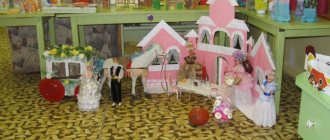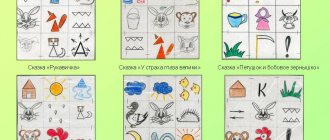Labor education
Many researchers consider labor education as the core and highest level in the development of pedagogy. The Swiss educator J. G. Pestalozzi (1747-1826) said that children need to be prepared for life in society already at school. Otherwise they will fall into slavery. The last link in Pestalozzi's reasoning always has practical significance. He believed that the culmination of knowledge is practical life. If not, then the theory is lifeless, isolated from the demands of life. It is in this context that vocational education comes to the fore. Pestalozzi allowed the children in his “almshouse” (1769 - 1774) to work in the fields in the summer, and taught them weaving in the winter.
In the 1920s, Germany and Russia saw a strong surge of interest in labor education. Outstanding teachers, especially G. Kerschensteiner in Germany and P. P. Blonsky in Russia, developed labor school projects. Both believed that the school of knowledge does not stimulate student activity and does not take into account social conditions. Theory should not be divorced from practice, which is why its culmination is the work school. It must always be remembered that social progress is directly related to progress in the world of work.
Proponents of labor pedagogy make an assumption about activity theory, but they complement it by referring to the concept of labor. Unfortunately, the content is usually not explained. After conducting relevant research, we came to the conclusion that social work is only that activity that participates in the process of social exchange, that is, it is useful for other people, as a result of which it is rewarded or blamed. Work pedagogy mainly focuses on social work. Individual work as a purposeful effort, as a necessary condition for the development of students, is not denied, but the emphasis is on social (public) work. It is this emphasis that prevails in the teaching activities of II. P. Blonsky.
The concept of social work and methods of its evaluation are studied in economic sciences. Therefore, labor education is a type of economic, not political or legal education. According to Blonsky, a schoolchild acquires his first labor skills at school and family, then the range of his activities expands, he becomes a small farmer, a small artisan, a small citizen. The system of teaching schoolchildren is such that the work activity of adults is first studied and then reproduced. It is obvious that only those types of activities that are accessible to students with one form of disability or another are cultivated. Students are encouraged to take initiative and their interests are taken into account. Particular attention is paid to safety when performing work operations.
Particular attention is paid to safety when performing work operations to avoid damage to health.
The work of workers' schools revealed some of their shortcomings. Labor education enthusiasts clearly overestimated the ability of general secondary education to prepare students for future professions. The modern education system includes general secondary, secondary vocational and higher vocational education. In fact, supporters of workers' schools tried to combine secondary general and secondary vocational education in one educational institution. But there is no sufficient reserve of study time for this. The conceptual base taught in secondary schools is so vast that there is simply no time left for quality professional education. In addition, secondary specialized educational institutions, such as vocational schools and colleges, are selective in their training. If the activities of a secondary school are modeled on a specialized school, then the choice of higher professional education for graduates will be limited, and the school should provide the broadest possible prospects for future professional activity.
Equipment : stones, plant shoots, black soil, pallet, chisel, drill.
Progress of the event
Presenter . And everything that happens in the world... Beautiful and ugly, good and evil, hardworking and lazy. These are just a few examples, and there are many. Take, for example, work and laziness. Let us turn to the fairy tale “The Gift of a Lazy Man” by the writer V. Oseeva. Now we will see scenes based on the plot of her books.
So:
GIFT FOR A LAZY
Author. The lazy man had two things to do. He's tired of them. He decided to sell them.
Lazy guy (shouting in the market).
Hey people! Buy my business!
People (ask).
What are you doing?
Lazy person . One unstarted, the other unfinished!
People. Yes, they are not worth a penny!
Lazy person . Well, I'll give them away for free!
Author. And he gave it away. There will always be hunters for freebies. And whoever took it still has these things to do: one unstarted, the other unfinished.
Presenter . Try to draw a conclusion for yourself based on the fairy tale. Of course, you have to work to be happy. Work will bring you joy if people like your work. To do this you need to love people and nature. One day I overheard a conversation between children. They talked about stones, about flowers and decided to make a mountain out of stone, covered with flowers. So, we present to your attention. ..
GARDEN ON STONE. WHAT IS NATURE?
Misha (answers the survey).
Nature is forests, rivers, mountains. It’s good to hear the sound of a waterfall, climb along stone paths, wander through flowering meadows, and hear the song of the wind. So, a piece of this wonderful nature can be transferred to our apartments.
Dima. Yes Yes! We have already collected a bunch of these stones!
To do this you need to have a keen eye. When you walk along the road in the forest, pay attention to the stones. They often lie on the road. Let yourself be attracted by unusually shaped stones (shows a spongy, rough stone that resembles a hill).
Roma. Look! Yes, here is a spongy stone. It is convenient for processing. You just need to give it a magical look. It is necessary to involve dad or grandfather in the work.
Misha's grandfather (he is a stonecutter). We take a chisel and trim the stone. We make holes on the stone using a drill with a depth of 5-8 cm and a diameter of 2-3 cm. Now the mountain is ready.
Nina. Now it needs to be covered with living plants. Here's a microgarden for you. For this, indoor plants are used: Uzumbara violet, hare cabbage, cacti, myrtle. All shoots are placed in a pot and covered with a glass jar. Then these plants are placed on a bright windowsill. While the plants take root, the stone is given a decorative shape.
Misha. A porous stone that absorbs water well is suitable for a microgarden. During processing, water is poured onto the stone and the drill is cooled.
Nina . Chernozem should be poured into the prepared holes. It is needed for the initial rooting of planted plants. They then feed on microminerals from rock and water.
The landing must be done correctly. At the very top of the stone place dry-loving cacti, hare cabbage...
In the middle part there are haworthia and Uzumbara violets. At the very bottom are moisture-loving asparagus, ferns...
The kindergarten will become elegant.
Roma . The finished rock garden is placed in an enamel tray. Water is poured into the dishes. The stone absorbs water, moisturizes all plants and overheated air in the room. Such a picturesque garden will decorate the apartment well and will always maintain the necessary coolness during the heating season and summer heat. And this is very good for our health.
(Children approach the table and examine the stone. “Waltz of the Flowers” by P. I. Tchaikovsky plays softly. The task is given: find a stone, give it a shape and plant flowers.)
Presenter . Remember the fairy tale “The Lazy Man’s Gift”!


